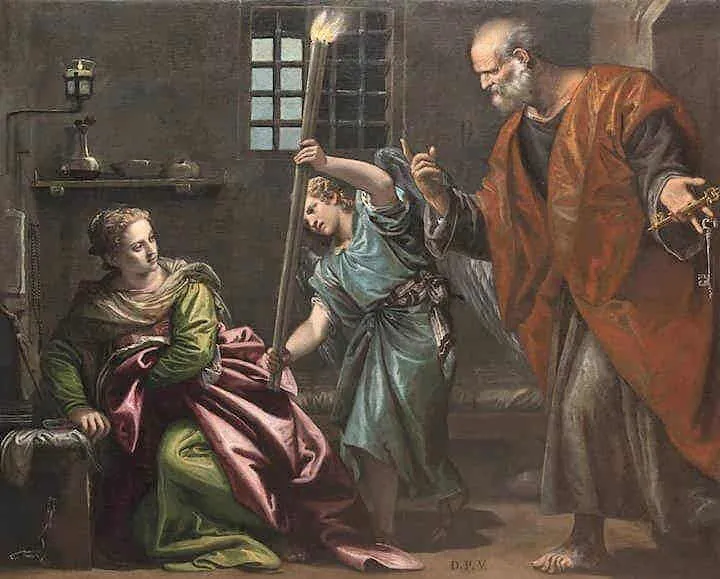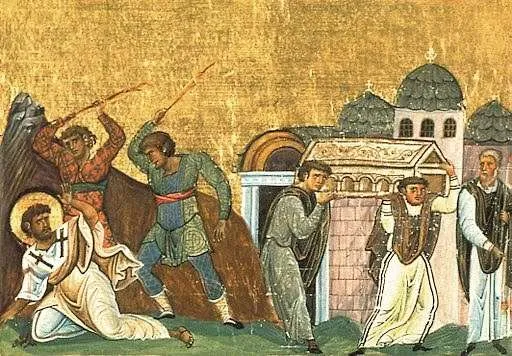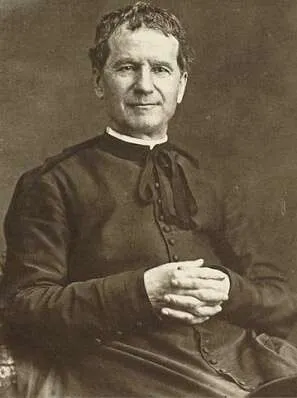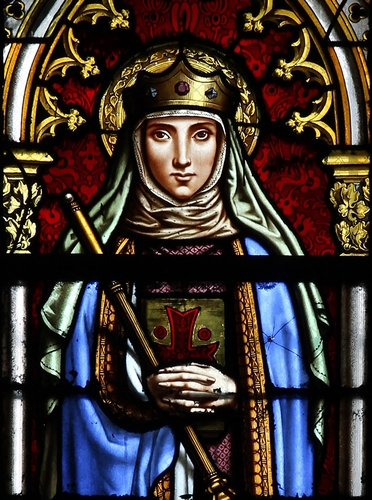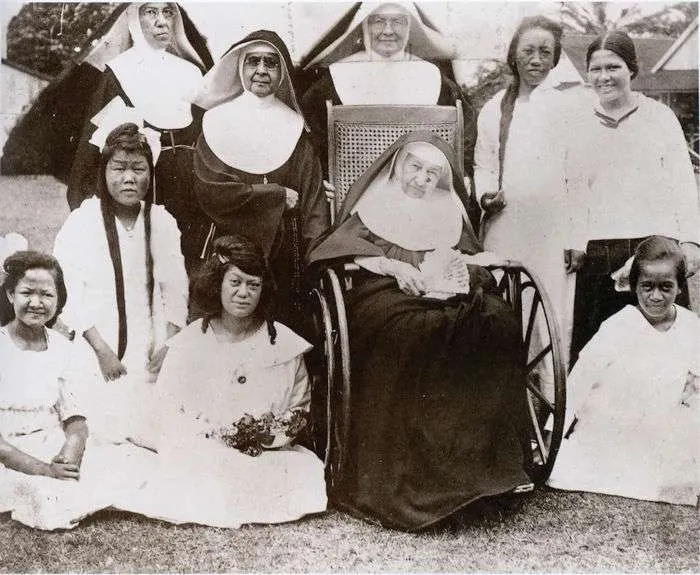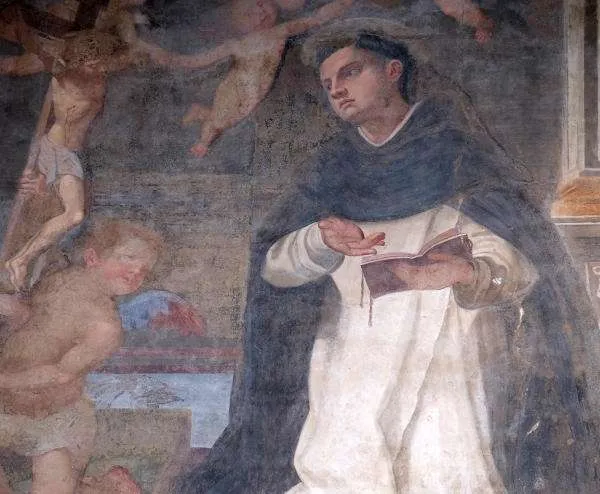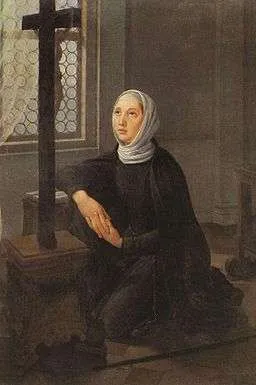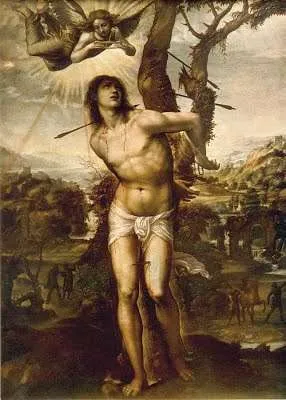Saint Agatha, Virgin and Martyr
c. 231–c. 251; Patron Saint of breast cancer patients, martyrs, rape victims, bellfounders, and bakers Invoked against earthquakes, natural disasters, and fires; Pre-Congregation canonization, later confirmed by Pope Saint Gregory the Great, 7th century
As with many of the early and most revered martyrs in our Church, very little is known about the life and death of Saint Agatha. She was born in either Palermo or Catania, Sicily around the year 231 and died a martyr’s death in Catania around the year 251 during the persecution of Christians ordered by the Roman emperor Decius. Early devotion to her is attested to by the fact that she is one of the seven virgin martyrs listed in the Roman Canon (Eucharisitic Prayer I in today’s Missal). Since the fifth or sixth century, other details, hymns, art, and stories about her life and death have emerged. Much of what is written about her life, however, emerged centuries later, leaving its historical accuracy in question.
According to those later traditions, Agatha was born into a wealthy noble family. At the age of fifteen, she made a vow of virginity, choosing to devote herself and her wealth solely to Christ, her divine Spouse. Because she was very beautiful and wealthy, the local Roman Prefect Quintianus wanted to take her for his wife for impure reasons and to attain her wealth. She refused his every attempt.
When Emperor Decius issued a decree in 250, requiring all citizens to offer sacrifice to the Roman gods, Quintianus had an idea. He decided that if he arrested Agatha and threatened her with torture and death, she would renounce her Catholic faith and accept his offer of marriage. Instead, she deepened her devotion to Christ and once again refused him saying, “If you threaten me with wild beasts, know that at the Name of Christ they grow tame; if you use fire, from heaven angels will drop healing dew on me.”
Faced with another failure to steal her purity, Quintianus devised another plan. He imprisoned Agatha in the local brothel, thinking she would lose her virginity and then change her mind. However, she remained steadfast in her purity and faith in that ungodly environment.
After a monthlong stay in the brothel, Agatha was summoned before Quintianus again. Filled with rage, he threatened her with torture and death. She faced him with courage and remained at peace, exuding joy at the opportunity to suffer for Christ. Her peaceful and joyful disposition only angered Quintianus further, so he had her stretched on a rack, her flesh torn with iron hoods, burned with torches, and whipped. Finally, the sick and diabolical Quintianus ordered that her breasts be twisted and torn and then be cut off. To this, Agatha responded, “You cruel, impious, sacrilegious tyrant, do you feel no shame to torture a woman in her breasts, you, who from a mother’s breast drew your first nourishment? You may destroy my body, for it is but weak and perishable; yet my soul, consecrated from my childhood to its Saviour, you cannot reach nor destroy.” After being sent back to prison in this mutilated state, Agatha saw Saint Peter appear to her and miraculously heal her wounds with a father’s love. The prison cell then radiated with light, frightening and confusing the guards.
Four days later, Quintianus summoned Agatha again. When she appeared before him healed of her wounds, Quintianus was shocked but his heart remained obstinate. This time he stripped her of her clothing and made her roll over burning coals and sharp stones. The wrath of God, however, flared up and there was an earthquake. Part of the building they were in crumbled, killing two of Quintianus’ companions. The people of the town were outraged at what Quintianus had done to Agatha and blamed him for the earthquake. Again, Quintianus did not budge. After being sent back to prison, Agatha prayed and surrendered her spirit to the Lord, Who received her into her heavenly home.
It is shocking what people are capable of doing. Some are capable of the most hideous, diabolical, and self-serving acts. Others are capable of enduring those evils for the love of Christ with peace, strength, and joy. Regardless of the historical accuracy of the details of Saint Agatha’s life and death, her story, as it has been handed down, reveals the potential in every human heart. We have the potential to be great sinners, the potential to be great saints, or somewhere in-between. Allow the witness of Quintianus to fill your heart with a holy fear of sin and the witness of Saint Agatha to move you from that “in-between.” Her courage and unwavering fidelity to Christ have shone a light for countless people throughout the centuries. One day, in Heaven, we will meet the true Saint Agatha and rejoice as we gaze upon the beauty and purity of her soul. Seek to make your soul radiate with that same glory by the grace of God and your fidelity to His holy will.
Source: https://mycatholic.life/saints/saints-of-the-liturgical-year/february-5-st-agatha-virgin-martyr/
Saint Agatha, Virgin and Martyr Read More »


